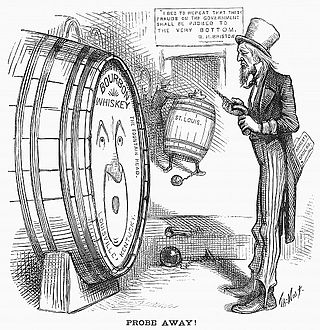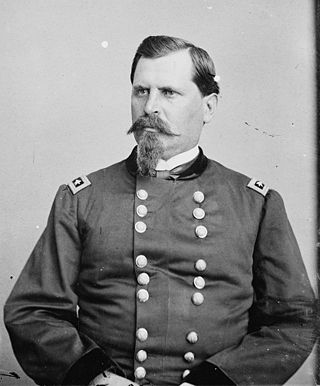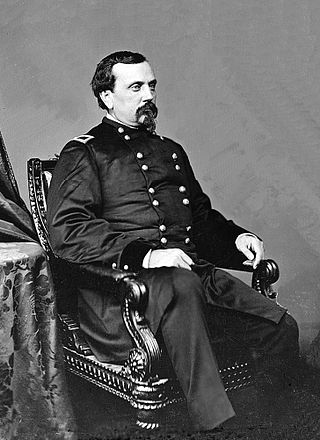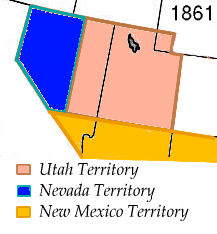Related Research Articles

The Watergate scandal was a major political scandal in the United States involving the administration of President Richard Nixon from 1972 to 1974 that led to Nixon's resignation. The scandal stemmed from the Nixon administration's attempts to cover up its involvement in the June 17, 1972, break-in of the Democratic National Committee headquarters in Washington, D.C., at the Watergate Office Building.

Nevada County is a county located in the U.S. state of California, in the Sierra Nevada. As of the 2020 census, its population was 102,241. The county seat is Nevada City. Nevada County comprises the Truckee-Grass Valley micropolitan statistical area, which is also included in the Sacramento-Roseville combined statistical area, part of the Mother Lode Country.

The Teapot Dome scandal was a bribery scandal involving the administration of United States President Warren G. Harding from 1921 to 1923. Secretary of the Interior Albert Bacon Fall had leased Navy petroleum reserves at Teapot Dome in Wyoming, as well as two locations in California, to private oil companies at low rates without competitive bidding. The leases were the subject of an investigation by Senator Thomas J. Walsh. Convicted of accepting bribes from the oil companies, Fall became the first presidential cabinet member to go to prison, but no one was convicted of paying the bribes.

The Prohibition Party is a political party in the United States known for its historic opposition to the sale or consumption of alcoholic beverages and as an integral part of the temperance movement. It is the oldest existing third party in the United States and the third-longest active party.

The Territory of Idaho was an organized incorporated territory of the United States that existed from March 3, 1863, until July 3, 1890, when the final extent of the territory was admitted to the Union as Idaho.

The Whiskey Ring took place from 1871 to 1876 centering in St. Louis during the presidency of Ulysses S. Grant. The ring was an American scandal, broken in May 1875, involving the diversion of tax revenues in a conspiracy among government agents, politicians, whiskey distillers, and distributors. Whiskey distillers bribed officials from the U. S. Department of the Treasury to increase profits and evade taxes. Grant's Justice Department prosecuted members of Grant's own Republican Party who were part of the Ring. The kingpin of the Whiskey Ring was the notorious General John McDonald, whom Grant had appointed Revenue Collector of Missouri District in 1869. Under the leadership of Grant's Secretary of Treasury, Benjamin Bristow, a reformer, the Ring was uncovered and broken up.

Patrick Anthony McCarran was an American farmer, attorney, judge, and Democratic politician who represented Nevada in the United States Senate from 1933 until 1954.

William Babcock Hazen was a career United States Army officer who served in the Indian Wars, as a Union general in the American Civil War, and as Chief Signal Officer of the U.S. Army. His most famous service was defending "Hell's Half Acre" at the Battle of Stones River in 1862, and seizing Fort McAllister, Georgia, in December 1864, which allowed William Sherman to capture Savannah at the end of his March to the Sea.

Orville Elias Babcock was an American engineer and general in the Union Army during the Civil War. An aide to General Ulysses S. Grant during and after the war, he was President Grant's military private secretary at the White House, Superintendent of Buildings and Grounds for Washington D.C., and a Florida-based federal inspector of lighthouses. Babcock continued to serve as lighthouse inspector under Grant's successors Rutherford B. Hayes, James A. Garfield, and Chester A. Arthur.

Delos Rodeyn Ashley was a California and Nevada politician who served as State Treasurer of California and a member of the United States House of Representatives from Nevada.

Samuel Shethar Phelps was an American lawyer and politician. He was a United States senator from Vermont, and a member of the Whig Party.

U.S. Route 50 (US 50) is a transcontinental United States Numbered Highway, stretching from West Sacramento, California, in the west to Ocean City, Maryland, in the east. The California portion of US 50 runs east from Interstate 80 (I-80) in West Sacramento to the Nevada state line in South Lake Tahoe. A portion in Sacramento also has the unsigned designation of Interstate 305. The western half of the highway in California is a four-or-more-lane divided highway, mostly built to freeway standards, and known as the El Dorado Freeway outside of downtown Sacramento. US 50 continues as an undivided highway with one eastbound lane and two westbound lanes until the route reaches the canyon of the South Fork American River at Riverton. The remainder of the highway, which climbs along and out of the canyon, then over the Sierra Nevada at Echo Summit and into the Lake Tahoe Basin, is primarily a two-lane road.

The History of Nevada as a state began when it became the 36th state on October 31, 1864, after telegraphing the Constitution of Nevada to the Congress days before the November 8 presidential election. Statehood was rushed to help ensure three electoral votes for Abraham Lincoln's reelection and add to the Republican congressional majorities.
Orleans Flat was a historic mining town located on the San Juan Ridge about 20 miles northeast of Nevada City, California and about 5 miles northeast of North Bloomfield, California. The town was about 1 mile south of the Middle Yuba River at an elevation of about 4200 ft. To the west lay the mining towns of Moore's Flat and Woolsey's Flat, each about I mile apart. All three were settled around 1851 and their histories frequently intertwine. Collectively, they are sometimes referred to as "The Flats." All three were part of Eureka Township.

Ulysses S. Grant and his administration, including his cabinet, suffered many scandals, leading to a continuous reshuffling of officials. Grant, ever trusting of his chosen associates, had strong bonds of loyalty to those he considered friends. Grant was influenced by political forces of both reform and corruption. The standards in many of his appointments were low, and charges of corruption were widespread At times, however, Grant appointed various cabinet members who helped clean up the executive corruption. Starting with the Black Friday (1869) gold speculation ring, corruption would be discovered in seven federal departments. The Liberal Republicans, a political reform faction that bolted from the Republican Party in 1871, attempted to defeat Grant for a second term in office, but the effort failed. Taking over the House in 1875, the Democratic Party had more success in investigating, rooting out, and exposing corruption in the Grant Administration. Nepotism, although legally unrestricted at the time, was prevalent, with over 40 family members benefiting from government appointments and employment. In 1872, Senator Charles Sumner, labeled corruption in the Grant administration "Grantism."
Remington Hill is a historic mining camp in Nevada County, California which prospered in the second half of the 19th century. It was named for Caleb Remington, a prominent local miner who lived mostly in neighboring Little York, where he died in 1865. It lay at an elevation of 4052 feet. It was situated around present Chalk Bluff Road about one mile south of Highway 20 and about 5.5 miles southeast of the town of Washington and 6 miles northeast of Dutch Flat, as the crow flies.

Miranda Mai Du is an American lawyer who has served as a United States district judge. Du was nominated by President Barack Obama to the United States District Court for the District of Nevada in 2011, and confirmed by the Senate in 2012. As a district judge, Du has presided over a number of noteworthy cases, including a number regarding voting rights. She has been chief judge of the court since 2019.

Emmett Jay Scott was an American journalist, founding newspaper editor, government official and envoy, educator, and author. He was Booker T. Washington's closest adviser at the Tuskegee Institute. He was responsible for maintaining Washington's nationwide "machine," with its close links to the black business leadership, white philanthropists, and Republican politicians from the local level to the White House. After Washington's death, Scott lost his Tuskegee connection, but moved to Washington, D.C. as Special Adviser of Black Affairs to Secretary of War Newton D. Baker. Scott was the highest-ranking African-American in President Woodrow Wilson's administration. After 1919, he was less and less visible in national affairs, with the NAACP taking the leadership role that Booker T. Washington had dominated.
Fred E. Allen was an American merchant and politician from New York.

The Superior Court of California, County of Nevada, also known as the Nevada County Superior Court or Nevada Superior Court, is the branch of the California superior court with jurisdiction over Nevada County.
References
- ↑ Library, Nevada State (29 May 1966). "Report" – via Google Books.
- 1 2 3 Previous Secretaries of State
- ↑ Cooper, Thomas Valentine (1883). "American Politics (Non-partisan) from the Beginning to Date. Embodying a History of All the Political Parties with Their Views and Records on All Important Questions. Great Speeches on All Great Issues, the Text of All Existing Political Laws ... Also a Complete Federal Blue Book".
- ↑ West, Thompson & (29 May 1958). "Reproduction of Thompson and West's History of Nevada, 1881". Howell-North – via Google Books.
- ↑ Committee, California Legislature Senate State Prison (29 May 1855). "Report of Committee Relative to the Condition and Management of the State Prison". B.B. Redding, state printer – via Google Books.
- ↑ State, Nevada Secretary of (29 May 1875). "Biennial Report of the Secretary of State" – via Google Books.
